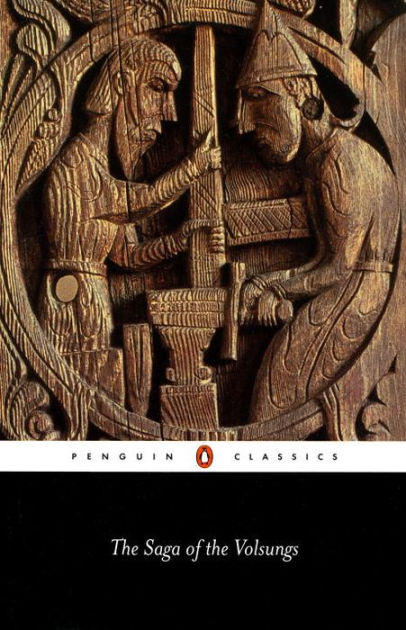As I continue with Shippey's book, I'm thinking that it would be intelligible to someone who hasn't read sagas, but probably wouldn't engage their interest. I'm enjoying reading about the Saga of the Volsungs, which I was able to include in a class, etc. And maybe I ought to reread the Saga of Hrolf Kraki before too long. (I mean by that the translation of the Icelandic work; but that reminds me that I have Poul Anderson's free retelling, too, read about 45 years ago -- I wonder how that would stand up.) Shippey reminds me of Tolkien's "Sellic Spell," which connected with that saga and with Beowulf -- another item to reread.
My favourite Nordic poem is but a brief passage. What is notable about it is that the events in the poem are related in Beowulf. Which lead Tolkien to believe in the historicity of the events and characters. The backstory to this is is one of love and treachery.
The Fight at Finnsburgh
‘the gables are not burning.’
Then the king, a novice in battle, said:
‘This is no dawn from the east, no dragon
flies here, the gables of the hall are not burning,
but men are making an attack. Birds of battle screech,
the grey wolf howls, spears rattle,
shield answers shaft. The wandering moon gleams
under the clouds; evil deeds will now
be done, bringing grief to this people.
But rouse yourself now, my warriors!
Grasp your shields, steel yourselves,
fight at the front and be brave!’
Then many a thegn, laden in gold, buckled his sword-belt.
Then the stout warriors, Sigeferth and Eaha,
went to one door and unsheathed their swords;
Ordlaf and Guthlaf went to guard the other,
and Hengest himself followed in their footsteps.
When he saw this, Guthere said to Garulf
that he would be unwise to go to the hall doors
in the first rush, risking his precious life,
for fearless Sigeferth was set upon his death.
But that daring man drowned the other voices
and demanded openly who held the door.
‘I am Sigeferth, a prince of the Secgan
and a well-known warrior; I’ve braved many trials,
tough combats. Even now it is decreed
for you what you can expect of me here.’
Then the din of battle broke out in the hall;
the hollow shield called for men’s hands,
helmets burst; the hall floor boomed.
Then Garulf, son of Guthlaf, gave his life
in the fight, first of all the warriors
living in that land, and many heroes fell around him,
the corpses of brave men. The raven wheeled,
dusky, dark brown. The gleaming swords so shone
it seemed as if all Finnesburh were in flames.
I have never heard of sixty warriors
who bore themselves more bravely in the fight
and never did retainers better repay
glowing mead than those men repaid Hnæf.
They fought for five days and not one of the followers
fell, but they held the doors firmly.
Then Guthere withdrew, a wounded man;
he said that his armour was almost useless,
his corselet broken, his helmet burst open.
The guardian of those people asked him at once
how well the warriors had survived their wounds
or which of the young men











